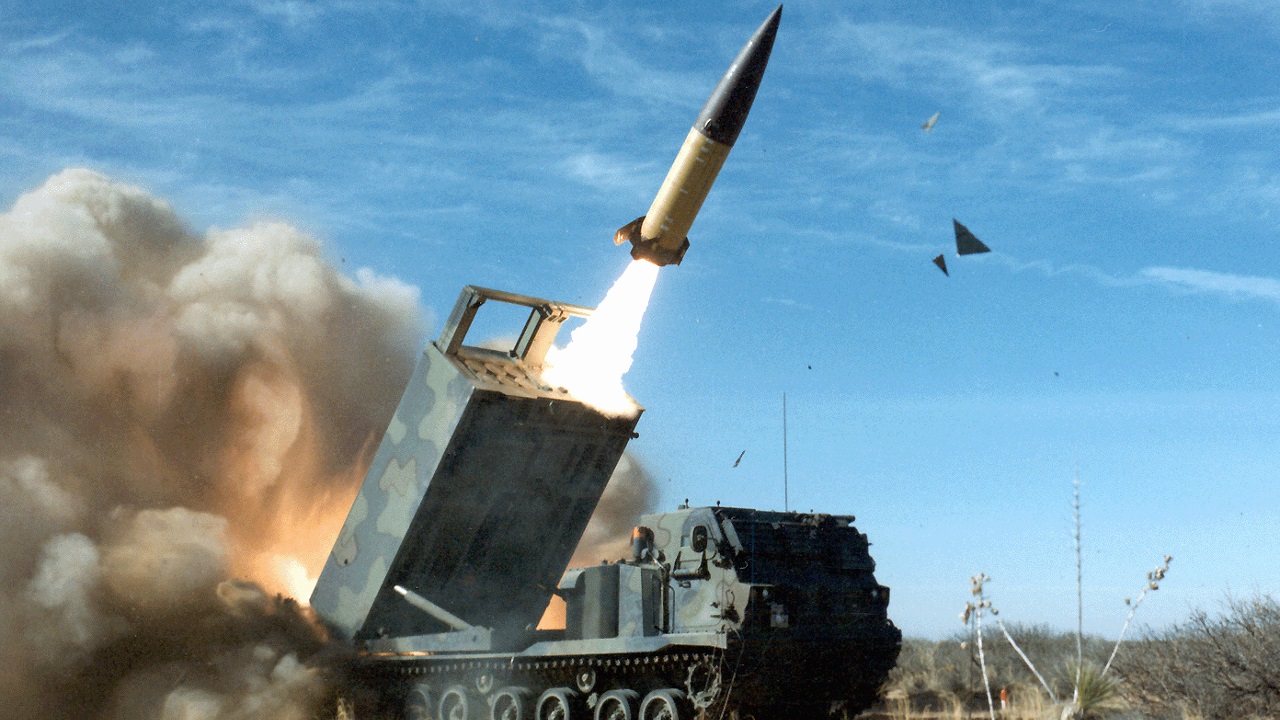Since the onset of Russia’s invasion last February, Ukrainian officials have requested various weapons and military equipment from the West to aid its defensive efforts. Just last month, the U.S. agreed to deliver around $400 million worth of equipment transfers to Ukraine, including ammunition and vehicle-launched bridges.
During the first few months of the war, Ukraine needed more anti-armor and air defense capabilities to thwart Russia’s advances into Kyiv. However, as the conflict has evolved so have Ukraine’s weapon needs. One weapon Ukraine has frequently requested is the U.S. military’s Army Tactical Missile System (ATACMS), which would give the Ukrainian forces the ability to strike Russian targets as far as roughly 180 miles away. Essentially, this weapon would give Ukraine the opportunity to strike deep into Russia, which is the primary reason U.S. officials have been so resistant to this delivery. Additionally, the Pentagon is more concerned with ensuring enough weapons, including long-range ATACMS, remain in its own stockpile.
The U.S. Has Delivered Various Weapons Systems to Ukraine in the Past
In addition to the large amount of humanitarian aid Washington has supplied to Kyiv, the U.S. and its North Atlantic Treaty Organization (NATO) allies have provided Ukraine with a litany of advanced military hardware. Throughout the last year, America has supplied MLRS rockets, man-portable FGM-148 Javelins, Stinger missiles, HIMARS launchers, M777 155mm artillery howitzers and a host of unmanned aerial systems (UAS) and additional munitions. Despite all of these weapons deliveries, the U.S. has towed the line to ensure overt offensive weapons are not included in those transfers. The Kremlin has noted on many occasions that such a weapons delivery would be considered crossing a “red line.”
In February, U.S. officials told Ukraine’s representatives that it does not possess any ATACMS to spare, according to Politico.
Officials added that America’s military readiness would be harmed if its long-range missile stockpile were to dwindle. The Pentagon’s top policy official for Eastern Europe explained that “with every single capability that we provide, whether you’re talking, you know, HIMARS or you’re talking a particular kind of missile or ammunition, we’re always looking at the availability of our stocks, we’re looking at production considerations, and so that’s true of every capability, and we make decisions accordingly.”
ATACMS: Specs and Capabilities
To date, manufacturer Lockheed Martin has produced under 4,000 MGM-140 ATACMS. These surface-to-surface missiles give operators the immediate firepower to “win the deep battle,” as Lockheed likes to say. The missile system was originally designed in the late 1980s and officially entered service with the U.S. Army in 1991. Weighing in at just under 3,700 pounds, the ATACMS missiles have a flight ceiling of 160,000 feet and a max speed of Mach 3 (about three times the speed of sounds). The ATACMS were first deployed in combat during Operation Desert Storm and later saw warfare during Operation Iraqi Freedom. As of 2015, more than 560 ATACMS missiles have been fired. Over the years, several subsequent ATACMS variants emerged, all featuring improvements.
How Could ATACMS Aid Ukraine’s Efforts?
In recent months, Ukrainian forces and their Russian enemies have been duking it out in the eastern Ukrainian city of Bakhmut. Considered to be the longest and bloodiest battle in the war so far, Ukraine is hoping its approaching influx of Western armored vehicles will aid its progress. The addition of ATACMS missiles would be a huge asset for Ukraine as well. ATACMS uses the same launchers as the HIMARS, but with roughly three times the range. With this capability, Ukraine could target Russia’s main supply route, its bases in Crimea and other critical infrastructure. Additionally, ATACMS would weaken Russia’s ability to resist attacking Ukrainian soldiers.
As outlined by Breaking Defense, “Ukraine’s previous counteroffensives in the Kharkiv and Kherson regions succeeded in part thanks to GMLRS strikes that degraded Russian logistics and command and control. But while GMLRS remains a potent capability for Ukraine, Russia has adapted, including by moving depots and command-and-control posts beyond the system’s range. Ukraine thus needs a longer-range system to achieve similar disruptive effects.”
Critics of America’s Ukraine policy cite that the tens of billions of dollars invested in the Eastern European nation could have been used domestically instead. Supporters of sending over ATACMS missiles believe that the staggering amount of money already provided to Kyiv would be rendered useless if the critical capability Ukraine needs to thwart Moscow is withheld.
MORE: Video – Ukraine Has Massive New NATO ‘Cannon’ Ready To Fight Russia
MORE: ‘Americans Will Pay The Price’: One Democrat Is Angry At Joe Biden
MORE: Could Joe Biden Get Impeached?
Maya Carlin, a Senior Editor for 19FortyFive, is an analyst with the Center for Security Policy and a former Anna Sobol Levy Fellow at IDC Herzliya in Israel. She has by-lines in many publications, including The National Interest, Jerusalem Post, and Times of Israel. You can follow her on Twitter: @MayaCarlin.

